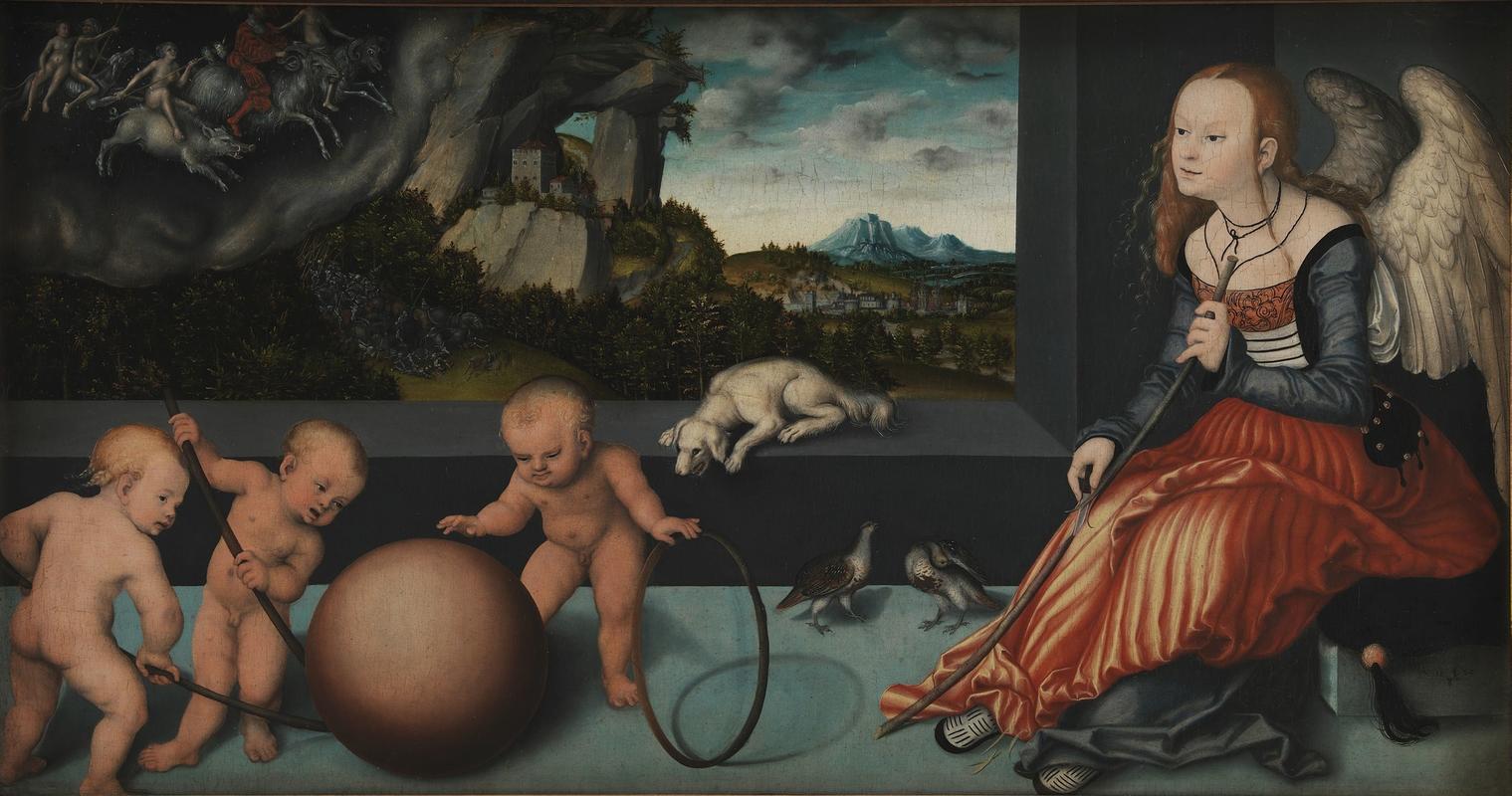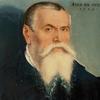More about Melancholy

Contributor
Cranach the Elder's Melancholy is like a Criterion Collection remastered version of his acquaintance Dürer's Melencholia I, dating from fourteen years earlier.
Cranach appreciated Dürer's work and felt that it needed an update, a spin-off, in oil and in color, this time, to illustrate the labyrinthine troubles of melancholy, which was both a medical term, inherited by scholars from Hippocrates, via Galen, and a mystical term, associated with astrology, alchemy, and the occult. For Hippocrates, whose oath is still part of medical practice, the symptoms of melancholic patients fall into two groups: "fear and despondency." Yet these emotions seem to have no cause, for the doctor. You have a nice house, lotsa money, a good spouse, healthy children, why the long face? The answers, from both medical doctors and mystics, are varied and tend toward vagueness, because the aspects of melancholy, which we now call "clinical depression," are so multifaceted and open to interpretation, like the various symbolic objects in Dürer and Cranach's allegories.
For the French writer Julia Kristeva, when you listen to a depressed person, you're "faced with a secret language of hidden meanings" over which the depressed person has total control, like the secret symbolic languages of Dürer and Cranach's parallel works. The depression, for her, is based on language, associated with the inability of the listener to enter into the language of the sufferer--likewise, art historians have to investigate the milieu of Cranach in order to understand what these encrypted figures represent. Luther, the former monk who kicked off the Protestant Reformation, was a neighbor of Cranach's in Wittenberg, and taught that melancholy's cause was the intervention of invisible worlds of demons lurking everywhere, like in the Tim Robbins movie "Jacob's Ladder." Even your tinfoil hat is no match for these creepy crawlies. The naked riders on the cloud in the background of this painting are also emblems of diabolical influence, represented by the planet-deity Saturn and the physical "humor" of black bile. The goat-like mount further emphasizes the satanic connection.
As anyone who's suffered from depression knows, you can't just "snap out of it" without confronting the seed of the problem, which can take lifetimes. Luther, Dürer, and Cranach are trying to teach people that the problem is not a material one, and yet we know that physical and emotional environments, not just indices of status or prosperity, are also critical. Sometimes, especially in, err, emotionally "challenging" environments like Medieval Europe, it can be a sign of health to be "unhealthy." Luther's namesake, Martin Luther King, Jr., said that "there are some things to which I'm proud to be maladjusted," like the sphere, representing Saturn, in Cranach's picture, trying to fit into the hoop that is too small for it. It's also helpful to get some sunshine, take a shower regularly, drink clean water, go to the bathroom often, and eat fresh vegetables. Maybe Luther and Cranach did these things, but these would have been the behaviors of an eccentric, a king, or a queen. Even so, the remedy that Luther and Cranach would likely have recommended for the apathy and inaction caused by depression would have been to seek spiritual fulfillment in religion.
Sources
- Carson, Clayborne, et al. The Papers of Martin Luther King, Jr., Volume VI: Advocate of the Social Gospel, September 1948 March 1963. Berkeley: University of California Press, 1992.
- "Lucas Cranach." The Painting of Melancholia, Aug. 9, 2009, https://paintingmelancholia.blogspot.com/2009/08/lucas-cranach-allegory….
- Ozment, Steven. Serpent and the Lamb: How Lucas Cranach and Martin Luther Changed Their World and Ours. New Haven: Yale University Press, 2012.
- Radden, Jennifer. The Nature of Melancholy: From Aristotle to Kristeva. Oxford University Press, 2002.
- Smith, Anne-Marie. Julia Kristeva: Speaking The Unspeakable. London: Pluto, 1998.
- Toohey, Peter. Boredom: A Lively History. New Haven: Yale University Press, 2011.
- Zika, Charles. Exorcising Our Demons: Magic, Witchcraft, and Visual Culture in Early Modern Europe. Leiden: Brill, 2003.
Featured Content
Here is what Wikipedia says about Melancholia (Lucas Cranach the Elder, Copenhagen)

Melancholia is an oil-on-panel painting by the German painter Lucas Cranach the Elder, created in 1532. It is held in the National Gallery of Denmark in Copenhagen.
Subject and composition
Melancholia depicts three naked babies who, with the help of sticks, try to roll a large ball through the hoop. A winged woman, lost in thought, is slicing a cane, perhaps intending to make another hoop. She is the personification of melancholy, similar to the winged genius from the engraving of the same name by Albrecht Dürer, executed 18 years before the painting of Cranach.
According to the ideals of the Renaissance, the whole world was based on analogies. So, melancholy at that time was associated with Saturn, a dog, carpentry. Many details of the picture are a reference to these analogies: the jump of witches in a black cloud, and an army in which soldiers fall from their horses.
The composition of the painting is distinctly horizontal. The Unterlinden Museum in Colmar owns a vertical version from the same year which presents a number of similarities.
Check out the full Wikipedia article about Melancholia (Lucas Cranach the Elder, Copenhagen)












